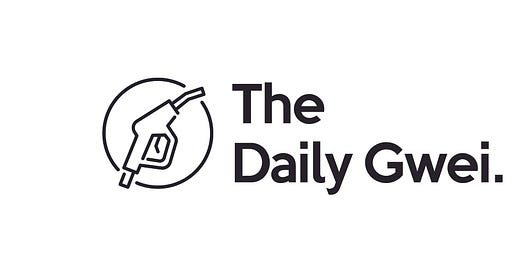It’s only been about a month since The Merge but we’re already seeing the effects of the ‘triple halvening’ playing out with ETH issuance. As I stated below, we’ve had an astonishing 96.5% net reduction in issuance since The Merge - this includes both the triple halvening and the fees that are burned each and every block. The best bit? In the 2 days since this tweet went out the net reduction has actually changed to 97.7% (because gas fees spiked up).

As I alluded to above, the figures in the tweet are a little outdated now but the point remains the same - Ethereum’s switch to Proof of Stake has resulted in a substantial decrease in ETH issuance. Now, the figures above are net of burnt fees which had been very low up until the last few days, and because of the spike in demand (thanks to something called ‘XEN Crypto’), the supply change since merge is now 7,683 ETH and it would’ve been 330,664 ETH if Ethereum was still a PoW network. You may be wondering if this supply change since merge can go to 0 or negative and I’m here to tell you that yes, yes it can, because every single block some amount of ETH is being burned.
What the last few days of higher-than-average gas prices have shown is that even a relatively small spike in demand can make ETH go deflationary (and it has been over the last 7 days). This is because there is an ‘ultra sound barrier’ that goes up or down depending on how much ETH is staked. Currently, the barrier is at 15.3 gwei, so as long as gas fees are at or above this level, the network will burn enough ETH per slot/block to offset 100% or more of the issuance in that same slot/block. Pretty neat, huh?
What’s awesome about all of this to me is that we are currently in a deep bear market with very little demand compared to the bull market, and the net issuance reduction has still been so substantial. Of course, this reduction hasn’t played out in the price of ETH yet, though I think this is because demand is just so low and there’s lots of uncertainty in the markets so people aren’t in a rush to part with their cash for ETH right now. If you believe like me that this won’t last forever, then logically we should start seeing the impact of this issuance reduction as soon as even a little bit of demand returns to ETH.
All in all, I don’t think it makes a lot of sense to put too much weight on ETH being deflationary or inflationary over shorter periods of time (such as weekly or monthly periods). I personally prefer to measure it out over yearly periods and also like to track it from the day that EIP-1559 went live (ETH’s issuance is -1.34% since then). This is because you want to average out the burn over longer periods of time to filter out as much of the noise as possible - after all, we all know how volatile layer 1 gas fees can be!
Have a great day everyone,
Anthony Sassano
Enjoyed today’s piece? I send out a fresh one every week day - be sure to subscribe to receive it in your inbox!
Join the Daily Gwei Ecosystem
All information presented above is for educational purposes only and should not be taken as investment advice.





Any updates?